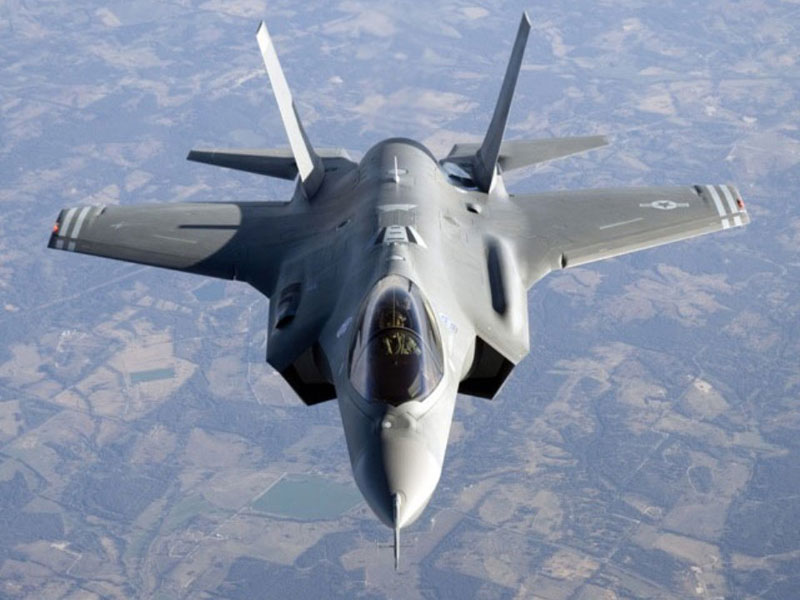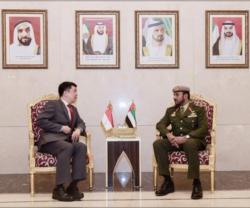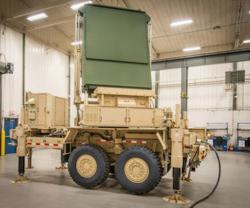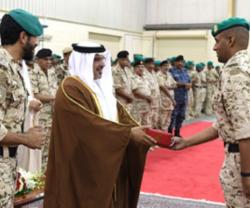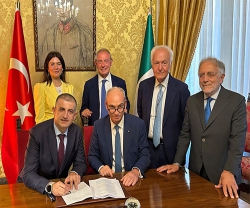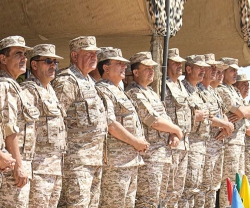Gulf countries are nearing decisions to buy more current generation fighter jets, but the buzz at last week’s Dubai Airshow was about Lockheed Martin’s radar-evading F-35 fighter - a plane not yet operational and not even on display there.
For the first time, US government and industry officials also spoke about the process under way to allow the sale of the Lockheed jet to the Gulf - probably about five years after Israel receives its first F-35 fighter jets in 2016.
US policy guidelines call for Israel to maintain a competitive military edge.
One Gulf source familiar with the region's defence market said the F-35 was generating a degree of excitement even before any US decision to allow its sale to Gulf buyers.
The possibility that the F-35 aircraft might become available could explain why Gulf countries are taking their time with decisions on purchases of other fighters, the source said.
Heidi Grant, Deputy Assistant Secretary of the US Air Force for International Programs, said Gulf buyers were focused on buying more fourth-generation jets but were clearly interested in the F-35 - a so-called “fifth-generation” warplane designed to be nearly invisible to enemy radar.
“They're just asking me to monitor it, and when it becomes available let (them) know,” Grant told Reuters in an interview. “They understand that we haven't made a policy decision to open up in this region right now.”
Grant said she continued to press for a release of the F-35 technology to the Gulf region, but was also at pains to stick to US military policy.
The US government always reserves certain capabilities for its own use, but it also wants its partners to be ready to help conduct coalition operation, Grant said.
Boeing Co's F-15 and Lockheed's F-16 were approved for sale to Gulf countries about five years after Israel.
US military sales are handled on a government-to-government basis, and decisions about releasing sensitive technologies are made by a committee that includes the Pentagon, State Department, Commerce Department and other agencies, depending on the technology in question.
US officials say the UAE has rapidly evolved to become its most capable and reliable partner in the Gulf region. Washington recently approved the sale of $4 billion worth of munitions to the UAE, as well as an advanced missile defense system built by Lockheed.
The $392 billion F-35 JSF, the Pentagon's biggest arms program, has seen a 70% increase in costs over initial estimates and repeated schedule delays, but US officials say the program has made progress in recent years. The US Marines Corps says it is on track to start using he plane in mid-2015.
Lockheed is building three models of the F-35 for the US military and eight countries that helped fund its development: Britain, Canada, Norway, Denmark, Australia, Italy, Turkey and the Netherlands.
Israel has ordered 19 jets that will be equipped with Israeli electronic warfare equipment as part of a deal that includes options for up to 75 jets.
Japan has also ordered the plane, and South Korea announced its plans to buy F-35s.
Patrick Dewar, Executive Vice President of Lockheed's international unit, said the US government had provided publicly available information to potential Gulf buyers but no classified briefs had yet been provided to his knowledge.
He said the F-35 is a multi-role fighter that was designed to replace the F-16, the F/A-18 and many other warplanes.
“Any air force that currently flies those jets has an expectation - and should have an expectation - that in the future at some time, the United States would release the F-35 to replace those jets,” Dewar said.
He said Lockheed was working with the US government to ensure its release policy was in synch with the planning process required by each of the governments for big arms deals.
One US source familiar with the world fighter market said countries like the UAE and Saudi Arabia that currently operate several types of fighters were more likely to buy other currently available jets in the interim. But countries with single-fighter fleets like Kuwait could decide to wait for the F-35 to become available, said the source.
Advanced as it is, the F-35 Lightning must contend with competition from European manufacturers and Boeing Co, which tout the benefits of their jets compared with the F-35, and raise questions about the schedule for the Lockheed jet.
French firm Dassault's Rafale jets and the BAE Systems-backed Eurofighter Typhoon are in a tight race to win a deal for at least 60 new aircraft to replace the UAE's Mirage fleet. UAE is also looking at buying 25 more Lockheed F-16s as well as upgrades for its existing jets.
The Eurofighter, built by Britain's BAE, EADS and Italy's Finmeccanica, is being marketed by BAE, which is chasing deals in Saudi Arabia, Qatar and Bahrain.
Douglas Barrie of the International Institute for Strategic Studies in London said Lockheed could be trying to stall any European purchase to buy time to complete development of the F-35, and get through the U.S. approval process.
Source: Reuters

